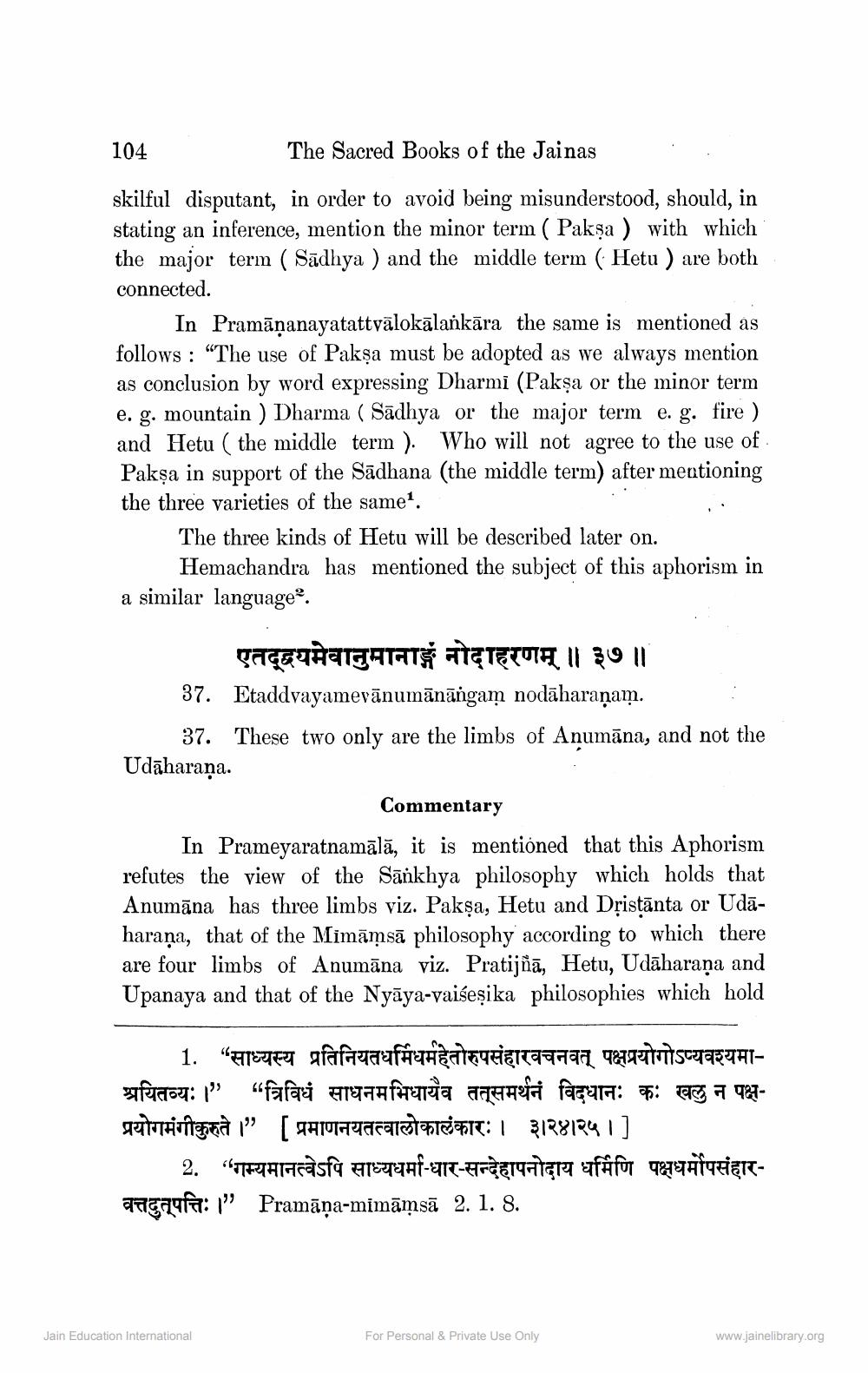________________
104
The Sacred Books of the Jainas skilful disputant, in order to avoid being misunderstood, should, in stating an inference, mention the minor term ( Pakşa ) with which the major term ( Sādhya ) and the middle term ( Hetu ) are both connected.
In Pramāṇanayatattvālokālankāra the same is mentioned as follows : "The use of Pakṣa must be adopted as we always mention as conclusion by word expressing Dharmi (Pakşa or the minor term e. g. mountain ) Dharma ( Sādhya or the major term e. g. fire ) and Hetu ( the middle term ). Who will not agree to the use of Pakṣa in support of the Sādhana (the middle term) after mentioning the three varieties of the same'.
The three kinds of Hetu will be described later on.
Hemachandra has mentioned the subject of this aphorism in a similar language:
एतद्वयमेवानुमानाङ्गंनोदाहरणम् ॥ ३७॥ 37. Etaddvayamevānumānāngam nodāharaṇam.
37. These two only are the limbs of Anumāna, and not the Udāharaña.
Commentary
In Prameyaratnamālā, it is mentioned that this Aphorism refutes the view of the Sānkhya philosophy which holds that Anumāna has three limbs viz. Pakşa, Hetu and Dțistānta or Udāharaṇa, that of the Mimāmsā philosophy according to which there are four limbs of Anumāna viz. Pratijñā, Hetu, Udāharaṇa and Upanaya and that of the Nyāya-vaiseșika philosophies which hold
___1. “साध्यस्य प्रतिनियतधर्मिधर्महेतोरुपसंहारवचनवत् पक्षप्रयोगोऽप्यवश्यमाश्रयितव्यः ।” “त्रिविधं साधनमभिधायैव तत्समर्थनं विदधानः कः खलु न पक्षgetrarítenza i” ( JAMAYACEITA: 1 3188184 1]
2. “गम्यमानत्वेऽपि साध्यधर्मा-धार-सन्देहापनोदाय धर्मिणि पक्षधर्मोपसंहारancaufa: 1" Pramāņa-mimāmsā 2. 1. 8.
Jain Education International
For Personal & Private Use Only
www.jainelibrary.org




